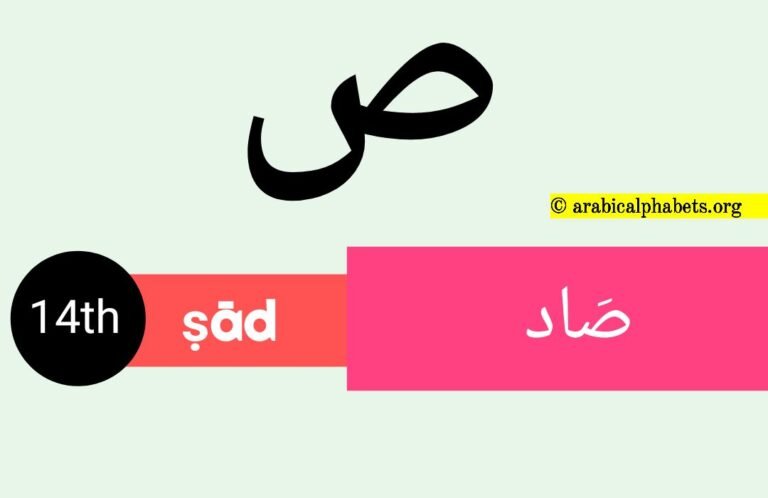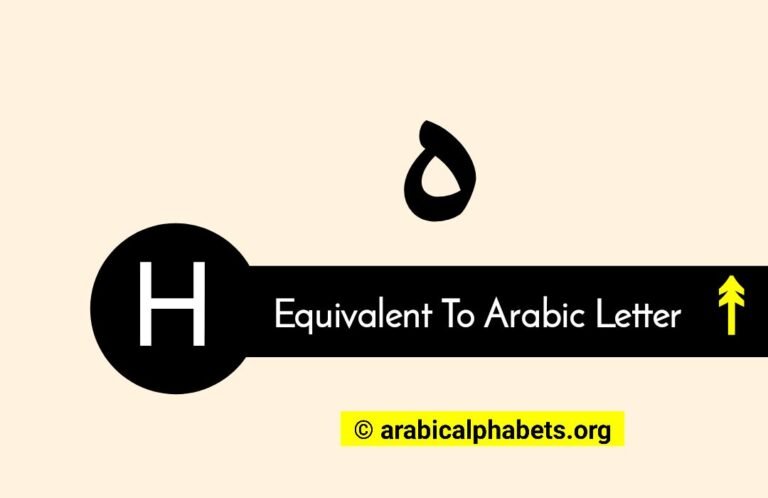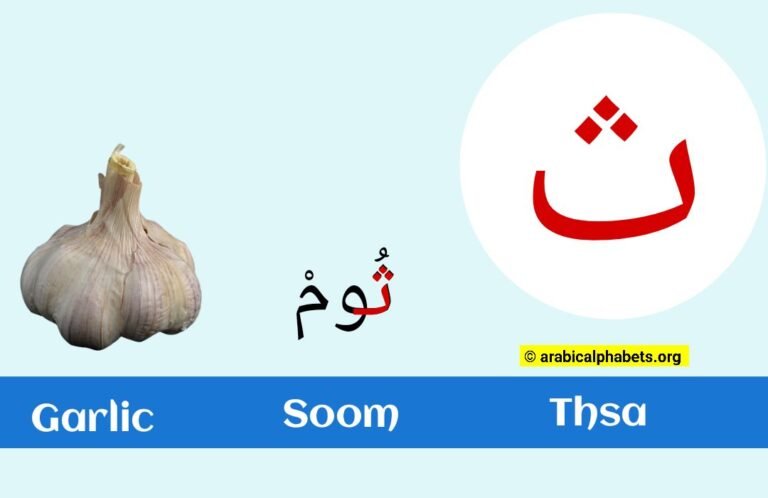Twenty-fourth Arabic Alphabet Letter
Have you ever wondered why the Arabic alphabet is so unique and intriguing? With its beautiful calligraphy and rich history, this ancient script has captivated people worldwide for centuries. But did you know that there is a specific order to the Arabic letters? Most of us are familiar with the first few letters, but what about the twenty-fourth letter?
In this article, we will uncover the mysteries behind this lesser-known character and explore how it fits into the overall structure of the Arabic alphabet. So come along on this linguistic journey as we delve into the twenty-fourth Arabic alphabet letter and discover its place in a sequence of 28 fascinating symbols.
Twenty-fourth Arabic Alphabet Letter Full Details Here
Table Description -> A – Serial Number, B – Isolated Form, C – Trans-literation, D – Letter name, E – Letter Name In Arabic Script.
| A | B | C | D | E |
|---|---|---|---|---|
| 24 | م | m | mīm | مِيم |
Welcome to a comprehensive exploration of the twenty-fourth letter of the Arabic alphabet, “Mīm” (م). This guide will delve into its pronunciation, written form, role in word formation, and cultural significance within the Arabic language. Let’s embark on a journey to uncover the essence of “Mīm”:
1. Introduction to “Mīm” (م):
“Mīm” occupies the twenty-fourth position in the Arabic alphabet, contributing its distinct sound to the language.
2. Mastering Pronunciation:
Achieve accurate pronunciation of “Mīm,” producing a nasal “m” sound that sets it apart from other letters.
3. Written Form of “Mīm” (م):
Appreciate the visual elegance of the written form of “Mīm,” resembling the English letter “m” but carrying a unique aesthetic.
4. Word Formation Role:
Explore how “Mīm” collaborates with other letters to create words, forming a foundation for meaningful Vocabulary.
5. Expanding Vocabulary:
Familiarize yourself with words containing “Mīm,” such as “مدرسة” (school), “ماء” (water), and “مدينة” (city), enriching your Arabic lexicon.
6. Impact on Arabic Grammar:
Understand the grammatical significance of “Mīm” in constructing sentences, influencing verb conjugations and noun cases.
7. Cultural Significance and Expressions:
Delve into the cultural context of “Mīm” within Arabic expressions, idioms, and colloquial language, reflecting regional nuances.
8. Aesthetic in Calligraphy:
Observe “Mīm” in Arabic calligraphy, whose shape lends itself to various artistic interpretations across styles.
9. Developing Writing Skills:
Practice writing “Mīm” in isolation and within words, honing your handwriting to replicate its form accurately.
10. Memorization Strategies:
Deploy memory techniques to facilitate the memorization of “Mīm.” Associate it with memorable visuals or words for improved retention.
11. Connecting to Reading:
Witness how “Mīm” collaborates with other letters to form words—progress in reading by recognizing it in diverse contexts.
12. Continued Learning Path:
Discover the logical next steps in your Arabic journey after mastering “Mīm,” including advancing to more complex language skills.
13. Enrichment through Cultural Insights:
By mastering “Mīm,” you’re immersing yourself in Arabic-speaking communities’ cultural and linguistic heritage.
14. Practical Application and Fluency:
Equip yourself with foundational skills to confidently engage in reading, writing, and conversations using “Mīm” and other Arabic letters.
Embark on this journey of enthusiastically discovering the Arabic letter “Mīm” (م). As you unravel its intricacies, you’re forging a path toward effective communication and a profound understanding of the depth and beauty of the Arabic language.
Arabic Letters Order
Table Description -> A – Serial Number, B – Isolated Form, C – Trans-literation, D – Letter name, E – Letter Name In Arabic Script.
| A | B | C | D | E |
|---|---|---|---|---|
| 1 | ا | ā | ʾalif | أَلِف |
| 2 | ب | b | bāʾ | بَاء |
| 3 | ت | t | tāʾ | تَاء |
| 4 | ث | th | thāʾ | ثَاء |
| 5 | ج | j | jīm | جِيم |
| 6 | ح | ḥ | ḥāʾ | حَاء |
| 7 | خ | kh | khāʾ | خَاء |
| 8 | د | d | dāl | دَال |
| 9 | ذ | dh | dhāl | ذَال |
| 10 | ر | r | rāʾ | رَاء |
| 11 | ز | z | zāy | زَاي |
| 12 | س | s | sīn | سِين |
| 13 | ش | sh | shīn | شِين |
| 14 | ص | ṣ | ṣād | صَاد |
| 15 | ض | ḍ | ḍād | ضَاد |
| 16 | ط | ṭ | ṭāʾ | طَاء |
| 17 | ظ | ẓ | ẓāʾ | ظَاء |
| 18 | ع | ʿ | ayn | عَيْن |
| 19 | غ | gh | ghayn | غَيْن |
| 20 | ف | f | fāʾ | فَاء |
| 21 | ق | q | qāf | قَاف |
| 22 | ك | k | kāf | كَاف |
| 23 | ل | l | lām | لاَم |
| 24 | م | m | mīm | مِيم |
| 25 | ن | n | nūn | نُون |
| 26 | ه | h | hāʾ | هَاء |
| 27 | و | w | wāw | وَاو |
| 28 | ي | y | yāʾ | يَاء |
Arabic Alphabet Demystified: Your Ultimate Guide to Letter Learning
Welcome to “Arabic Alphabet Demystified: Your Ultimate Guide to Letter Learning.” This comprehensive guide is your gateway to unraveling the mysteries of the Arabic Alphabet, providing you with essential tools and insights to master letter recognition, pronunciation, and usage. Let’s embark on a journey to demystify the Arabic Alphabet:
1. Embracing the Arabic Alphabet:
Discover the foundational significance of the Arabic Alphabet and how it forms the basis of the language’s expression.
2. Progressive Learning Path:
Follow a step-by-step learning approach, starting with the basics and progressing to more complex letters.
3. Mastering Pronunciation:
Unlock the secrets of accurate Arabic letter pronunciation through guided instructions and audio resources.
4. Visual Identification of Letters:
Learn to recognize Arabic letters in various positions within words and sentences, building your letter recognition skills.
5. Expanding Your Vocabulary:
Immerse yourself in Arabic vocabulary by exploring words associated with each letter, enriching your language skills.
6. Cultural Insights and Significance:
Understand each letter’s cultural context and linguistic nuances, connecting to the Arabic-speaking world.
7. Proficient Writing Skills:
Practice writing each letter accurately to ensure your ability to reproduce its form effectively.
8. Effective Memorization Techniques:
Utilize mnemonic devices and memory aids to expedite the memorization of Arabic letters.
9. Crafting Basic Words:
Witness the magic of combining letters to create simple words, bridging the gap between isolated letters and practical language usage.
10. Engaging Learning Activities:
Participate in interactive exercises and activities reinforcing letter recognition, pronunciation, and word formation.
11. Visual Aids and Learning Resources:
Leverage visual aids, diagrams, charts, and downloadable resources to cater to diverse learning styles.
12. Beyond the Basics: Progressing Proficiency:
Explore the next steps after mastering the Arabic Alphabet, including advancing to reading, writing, and specialized language skills.
13. Deepening Cultural Connection:
By demystifying the Arabic Alphabet, you’re immersing yourself in Arabic-speaking communities’ cultural and linguistic heritage.
14. Practical Application and Language Fluency:
Equip yourself with foundational skills to confidently engage in reading, writing, and conversations using Arabic letters.
Embark on this journey of unraveling the Arabic Alphabet with enthusiasm and dedication. As you progress through each letter, you’re unlocking the door to effective communication and a profound understanding of the beauty and depth of the Arabic language and culture.
Conclusion Points
In conclusion, our comprehensive exploration of the twenty-fourth Arabic alphabet letter, “Mīm” (م), has illuminated its essential role within the Arabic language. Through a deep dive into its pronunciation, written form, grammatical significance, and cultural connections, we’ve gained a profound appreciation for the significance of “Mīm” in shaping Arabic communication.
As you continue learning Arabic, remember that each letter, including “Mīm,” contributes to the mosaic of language and culture. Embrace the elegance of “Mīm” as it connects you to cultural expressions, linguistic nuances, and the broader Arabic-speaking community. With each letter mastered, you’re taking confident strides toward effective communication and a deeper understanding of the intricacies and beauty of the Arabic language.
Ten frequently asked questions (FAQs)
Where does “Mīm” (م) stand in the Arabic Alphabet?
“Mīm” is the twenty-fourth letter in the Arabic Alphabet.
How is “Mīm” (م) pronounced?
“Mīm” is pronounced as a nasal “m” sound, distinct from the regular “m” sound in English.
Describe the written form of “Mīm” (م).
The written form of “Mīm” resembles the English letter “m” but carries its visual elegance within Arabic script.
How does “Mīm” (م) contribute to forming words?
“Mīm” combines with other letters to create words, crucial in constructing meaningful vocabulary.
Could you provide examples of words containing “Mīm” (م)?
Certainly! Examples include “مدرسة” (school), “ماء” (water), and “مدينة” (city).
In what ways does “Mīm” (م) influence Arabic grammar?
“Mīm” affects Arabic grammar, influencing verb conjugations, noun cases, and sentence structures.
What cultural expressions and nuances are linked to “Mīm” (م)?
Delve into the cultural context of “Mīm” within expressions, idioms, and everyday language, reflecting regional diversity.
Is “Mīm” (م) commonly featured in Arabic calligraphy?
Yes, the distinctive shape of “Mīm” makes it a popular choice in Arabic calligraphy, adding to the aesthetics.
How can I improve my writing and recognition of “Mīm” (م)?
Regularly practicing writing “Mīm” in isolation and within words will enhance your ability to recognize and reproduce it accurately.
After mastering “Mīm” (م) in my Arabic learning journey, what’s the next step?
After mastering “Mīm,” you’re prepared to advance to reading, writing more complex words, and exploring further language skills.
These FAQs provide comprehensive insights into the Arabic letter “Mīm.” As you delve into its intricacies, you take significant strides toward understanding the Arabic language and culture more deeply.






